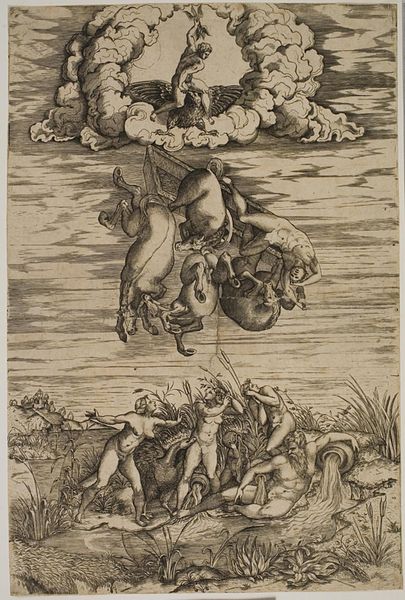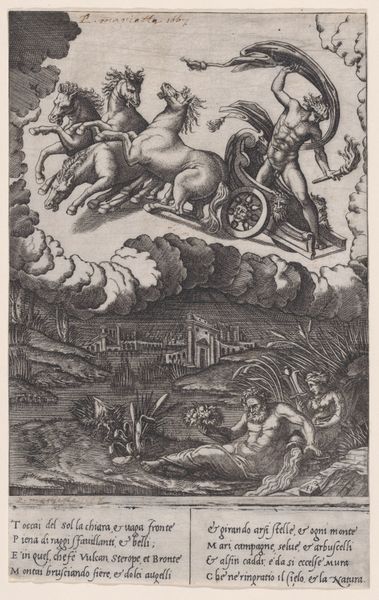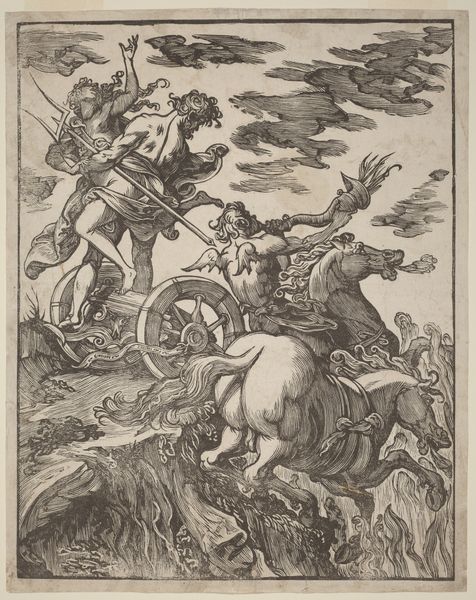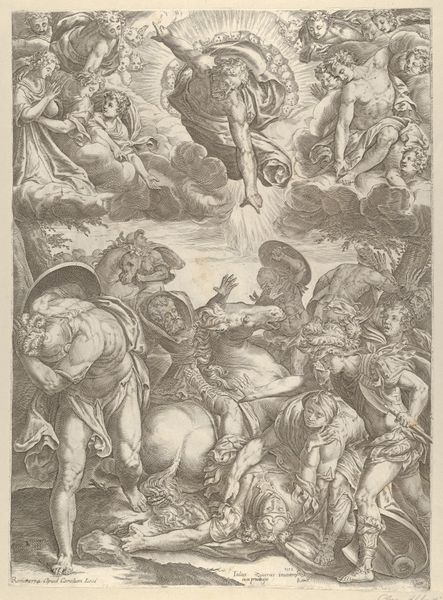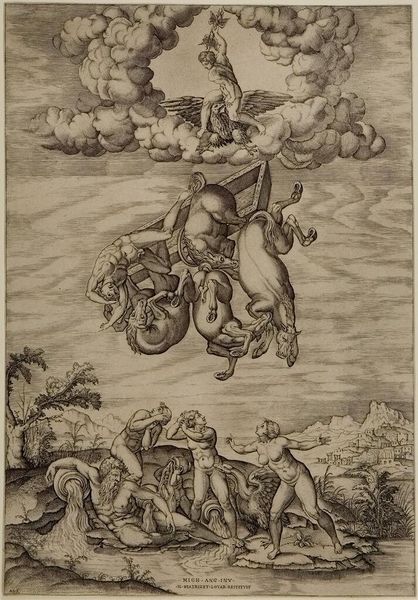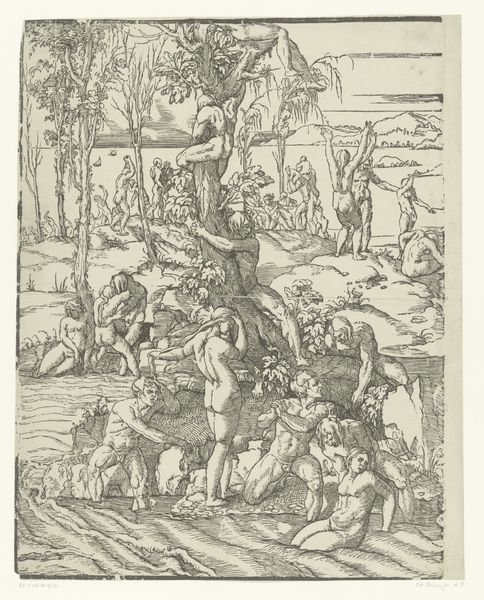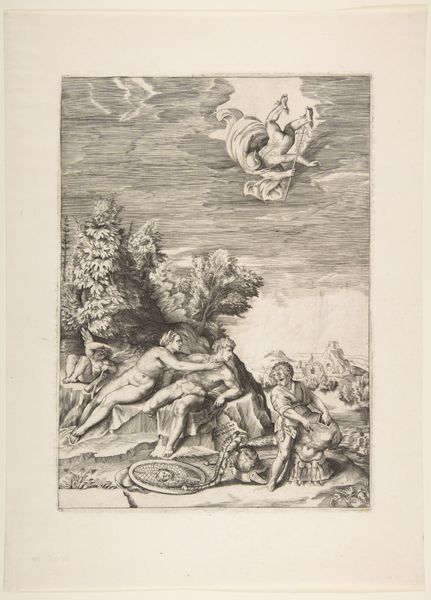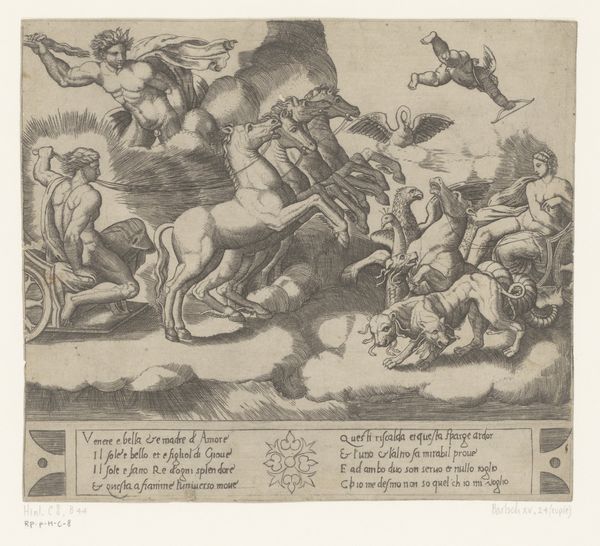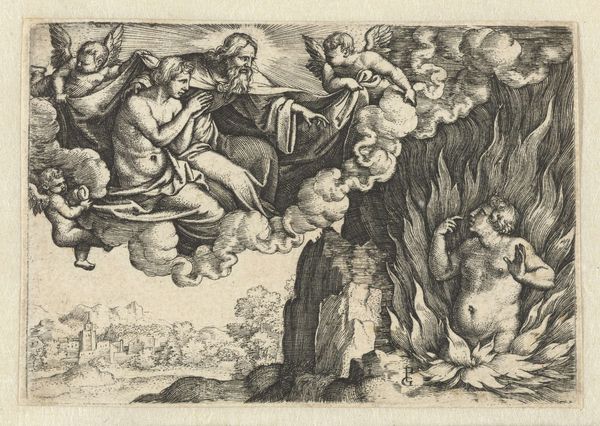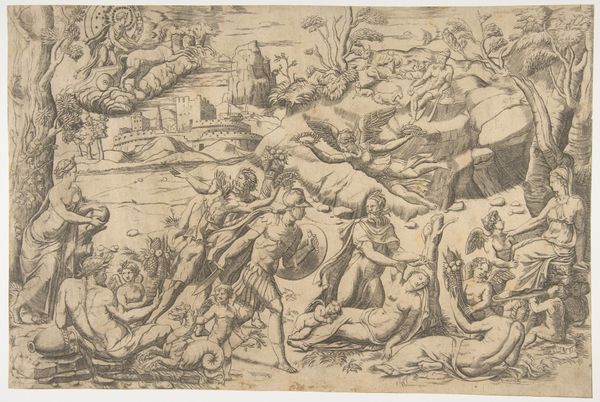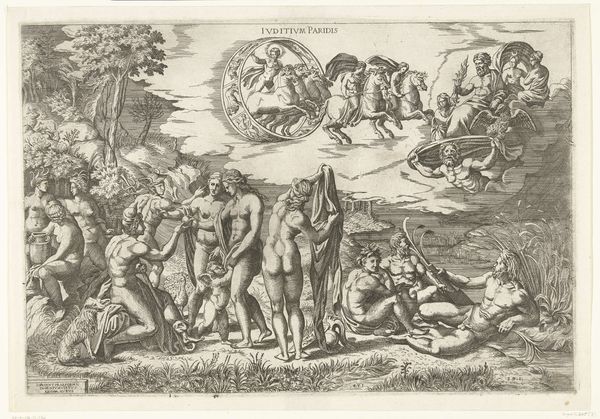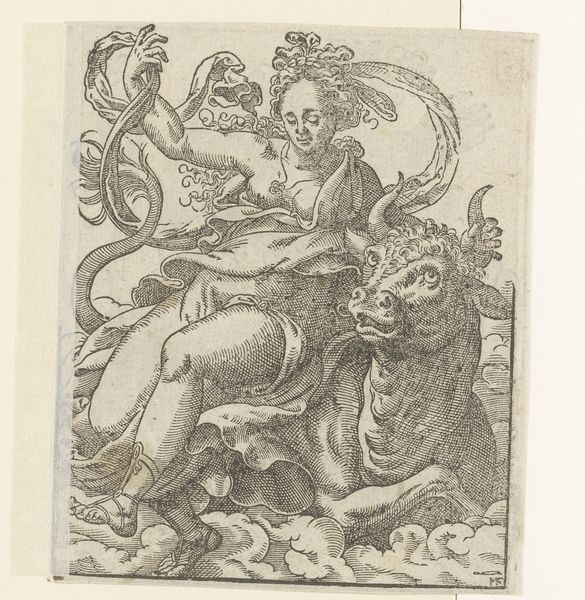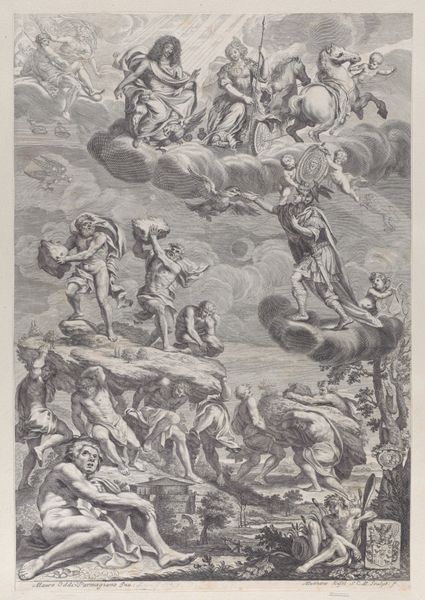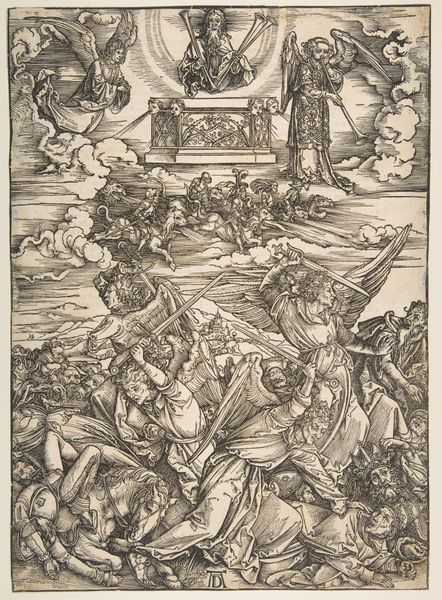
drawing, print, engraving
#
drawing
#
ink drawing
#
allegory
# print
#
classical-realism
#
mannerism
#
figuration
#
11_renaissance
#
history-painting
#
engraving
Dimensions: 16 1/4 × 11 3/8 in. (41.28 × 28.89 cm) (sheet)
Copyright: Public Domain
Nicolas Beatrizet created this engraving, Fall of Phaeton, in the mid-16th century, a time when the stories of classical antiquity were being reimagined by artists all over Europe. This image depicts a moment from Ovid's Metamorphoses, where Phaeton, son of the sun god Apollo, loses control of his father's chariot, causing chaos across the earth. Beatrizet’s print uses the visual language of the Italian Renaissance to give the story a new kind of dramatic intensity. Prints like these played a crucial role in disseminating artistic ideas across Europe. Beatrizet worked in Rome, a city that, thanks to the Vatican, was becoming the center of a new visual culture. His engraving helped to spread the influence of artists like Michelangelo, giving artists elsewhere access to the Eternal City’s most powerful imagery. By examining the social and institutional contexts in which art is produced and consumed, we gain a richer understanding of its historical significance. To dig deeper, we can consult period texts, artists' biographies, and institutional records.
Comments
minneapolisinstituteofart almost 2 years ago
⋮
This is the age-old story of the absentee father and the inexperienced teenage driver. Each day, Helios, sun-god of ancient Greece, drove his chariot across the sky from dawn until dusk. He paid little attention to his son Phaeton. One day the boy went to Helios and asked him to demonstrate to all that he was his father. In response, Helios promised to grant Phaeton any wish. Helios was shocked when the boy asked to drive the chariot. He warned Phaeton that not even the mighty Jupiter could control the powerful team of horses. But Phaeton persisted, and Helios finally gave in. Phaeton cracked the whip, and the horses took off. Before long they careened out of control, and Jupiter had to intervene by striking Phaeton with a thunderbolt that sent him tumbling to the earth. Béatrizet’s engraving is a contemporary translation of one of Michelangelo’s most famous drawings. The drawing itself was an object of wonder among Rome’s art lovers, but only a rarified audience had access to it. It was Béatrizet’s engraving that made the drawing recognizable throughout Europe.
Join the conversation
Join millions of artists and users on Artera today and experience the ultimate creative platform.
